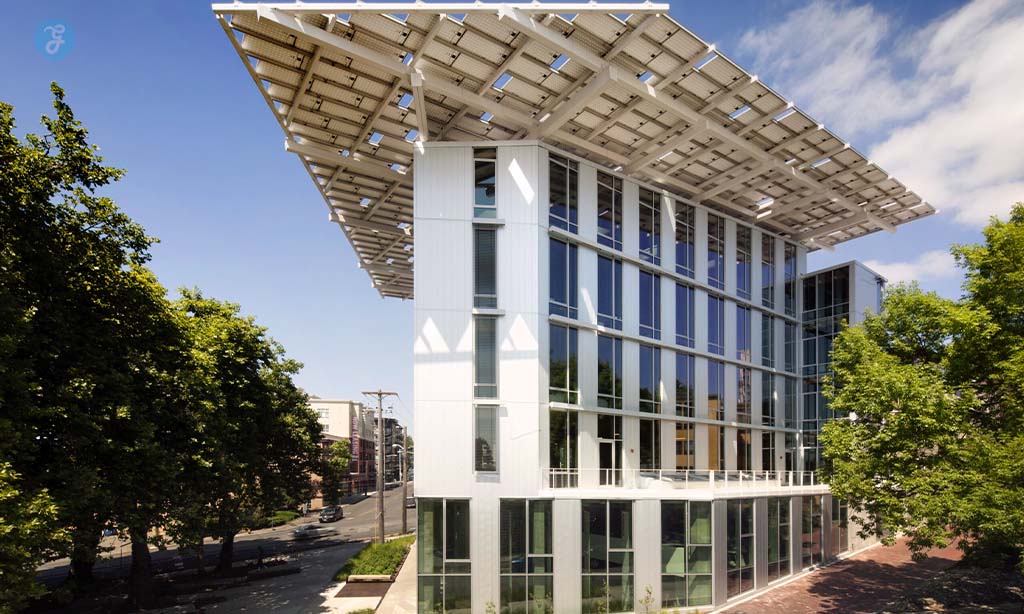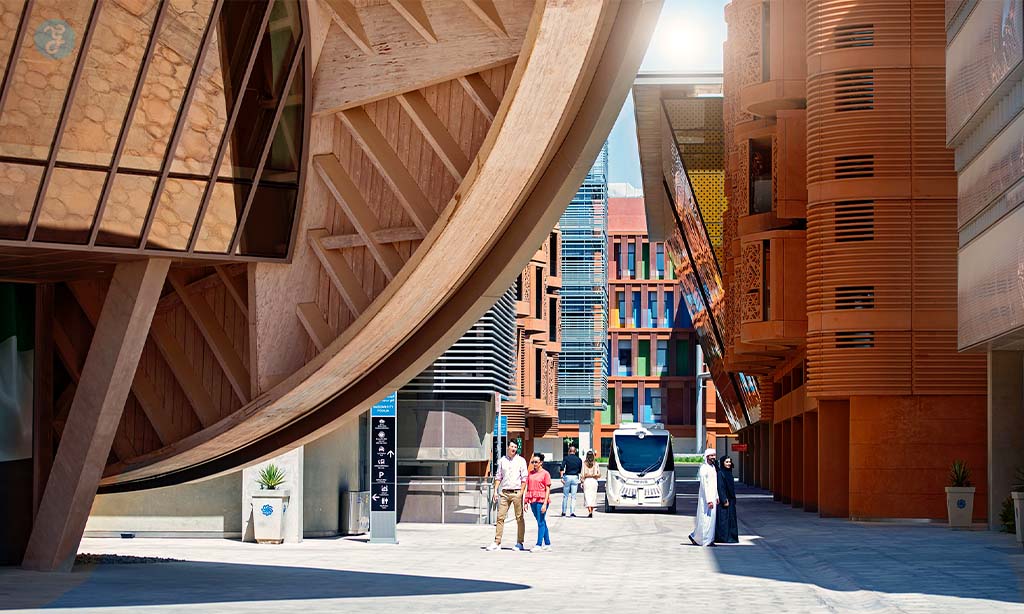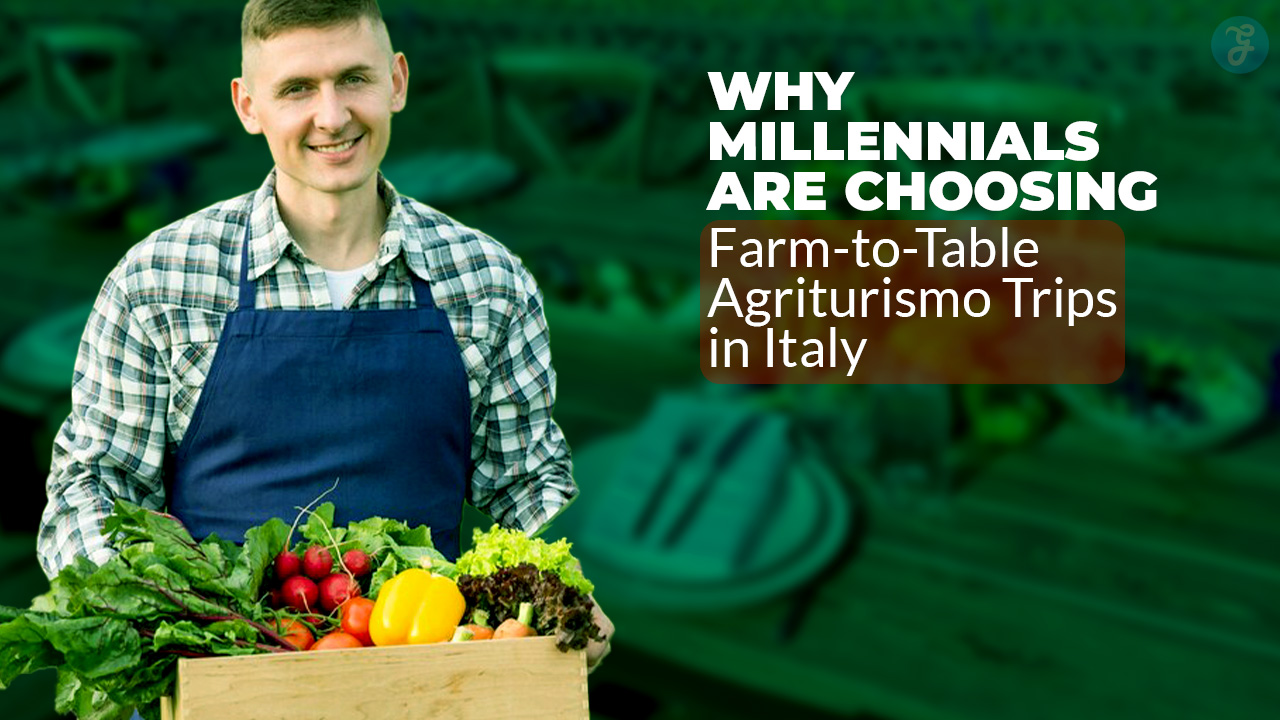Sustainability is no longer merely a trendy concept; it has become an essential cornerstone of modern real estate development globally. With increasing urgency surrounding climate change, resource depletion, and urban pollution, the demand for environmentally responsible construction has risen significantly.
Industry leaders, policymakers, and communities worldwide are now prioritizing sustainable practices, transforming the sector into a hub of innovation and ecological responsibility.
This article provides an in-depth exploration of 15 affordable green real estate projects that could change the industry, highlighting groundbreaking designs, innovative technologies, and practices that promise substantial environmental, social, and economic benefits for generations to come.
What Are Green Real Estate Projects?
Green real estate projects prioritize sustainability by integrating environmental best practices into their design, construction, and management. They typically include features like renewable energy sources, eco-friendly building materials, advanced technology, and community-centric designs that significantly reduce carbon footprints and enhance the quality of urban life.
But why exactly are 15 green real estate projects that could change the industry so important today?
- Environmental Impact: They minimize waste, conserve resources, and lower emissions.
- Economic Advantages: Green buildings attract higher market values and lower operational costs.
- Social Benefits: Healthier indoor environments and better community integration.
15 Green Real Estate Projects that Could Change the Industry
Sustainability is not merely a choice but a necessity in the current environmental climate. Green real estate projects are increasingly recognized for their potential to significantly reduce global carbon footprints and combat climate change.
These developments utilize groundbreaking technologies, advanced design principles, and forward-thinking policies to create environments that are both ecologically responsible and economically viable.
The following projects exemplify how innovative thinking in real estate can lead to profound environmental benefits, improved community well-being, and long-term economic growth.
1. Bosco Verticale
Bosco Verticale, located in Milan, Italy, stands as an iconic example of urban sustainability. Designed by architect Stefano Boeri, this project includes two residential towers covered with 800 trees and thousands of plants, transforming the buildings into vertical forests. It significantly reduces air pollution, lowers energy consumption by providing natural insulation, and contributes to urban biodiversity. Awarded the International Highrise Award, this model has inspired similar projects worldwide.
Key Features Table:
| Feature | Details |
| Location | Milan, Italy |
| Architect | Stefano Boeri |
| Sustainability Highlight | Vertical forest with extensive greenery |
| Impact | Reduces pollution, boosts biodiversity |
Why It Matters
Bosco Verticale has set a global benchmark for integrating nature within urban architecture, demonstrating that green real estate projects can directly combat urban heat and air pollution.
2. The Edge (Amsterdam, Netherlands)
Located in Amsterdam, The Edge is considered one of the smartest buildings globally due to its pioneering use of IoT (Internet of Things). Constructed by OVG Real Estate, it utilizes solar panels, advanced energy-efficient systems, and intelligent technology to achieve energy efficiency far surpassing traditional buildings. Currently, it produces more energy than it consumes, exemplifying the future of smart and sustainable office spaces.
Key Features Table
| Aspect | Details |
| Location | Amsterdam, Netherlands |
| Main Feature | Smart building technology |
| Energy Efficiency | Net-positive energy generation |
| Certifications | BREEAM Outstanding |
| Tech Integration | IoT systems, adaptive lighting, heating |
Why It Matters
The Edge exemplifies how advanced smart technology can elevate sustainability in commercial real estate, making it one of the top green real estate projects influencing industry practices globally.
3. Apple Park (Cupertino, USA)
Apple Park, Apple’s corporate headquarters in Cupertino, California, integrates cutting-edge sustainability within corporate architecture. Featuring solar panels covering nearly every roof, it is one of the largest solar-powered buildings globally. The circular design promotes energy efficiency and communal collaboration, utilizing natural ventilation systems to drastically reduce energy consumption.
Key Features Table
| Aspect | Details |
| Location | Cupertino, California, USA |
| Main Feature | Solar-powered headquarters |
| Energy Generation | 100% renewable (solar) |
| Sustainability Rating | LEED Platinum Certified |
Why It Matters
Apple Park’s investment in renewable energy demonstrates how major corporations can integrate sustainable practices on a grand scale, influencing future green real estate projects.
4. One Central Park (Sydney, Australia)
Located in Sydney, One Central Park has reshaped perceptions about sustainable urban living through its unique vertical gardens and water recycling systems. Designed by Jean Nouvel, this innovative residential complex reduces energy usage by utilizing vertical gardens for natural insulation and solar energy solutions integrated seamlessly into its architectural structure.
Key Features Table
| Aspect | Details |
| Location | Sydney, Australia |
| Special Feature | Vertical Gardens, Solar Panels |
| Environmental Benefit | Heat mitigation, reduced emissions |
| Awards | Multiple international eco-awards |
Why It Matters
This development is a testament to how luxury living and environmental responsibility can coexist, setting a standard for future green real estate projects.
5. Bullitt Center (Seattle, USA)
The Bullitt Center in Seattle, USA, is famously known as one of the greenest commercial buildings worldwide. Designed with sustainability at its core, it incorporates extensive solar panels, rainwater harvesting, composting toilets, and natural ventilation. Opened in 2013, it has become a beacon for sustainable commercial real estate by producing more energy than it consumes, creating a replicable model for future commercial developments.
Key Features Table
| Aspect | Details |
| Location | Seattle, Washington, USA |
| Sustainability Level | Net-zero energy, carbon-neutral |
| Key Technologies | Solar panels, rainwater harvesting |
| Certification | Living Building Challenge certified |
Why It Matters
Bullitt Center serves as an influential benchmark demonstrating that commercial real estate can achieve full sustainability without compromising functionality or design.
6. The Crystal (London, UK)
Located in London, The Crystal is a highly sustainable urban development that houses the world’s largest exhibition on sustainable cities. Powered entirely by renewable energy, this remarkable building features cutting-edge eco-friendly design including rainwater harvesting, solar energy utilization, and intelligent building management systems.
Key Features Table
| Aspect | Details |
| Location | London, United Kingdom |
| Sustainability | Carbon-neutral, renewable-powered building |
| Innovations | Advanced water recycling, intelligent systems |
| Educational Role | Center for sustainability education |
Why It Matters
The Crystal showcases practical sustainable solutions and educates thousands of visitors annually, making it a pivotal educational platform for future green real estate projects.
7. One Central Park (Sydney, Australia)
One Central Park in Sydney exemplifies eco-friendly urban living through its innovative integration of greenery and sustainability technologies. The project is renowned for its spectacular vertical gardens that not only beautify the building but also significantly reduce urban heat. Additionally, the use of reflective mirrors redirects natural sunlight into residential spaces, reducing electricity usage. Opened in 2014, it received multiple awards for its groundbreaking eco-friendly architectural design.
Key Features Table
| Aspect | Details |
| Location | Sydney, Australia |
| Green Innovations | Vertical gardens, reflective mirrors |
| Energy Efficiency | Reduced dependency on artificial lighting |
| Awards | CTBUH Best Tall Building Award |
Why It Matters
One Central Park exemplifies how urban residential developments can seamlessly integrate environmental sustainability with luxury living, setting a new standard for the real estate industry.
8. Parkroyal Collection Pickering (Singapore)
Located in the heart of Singapore, Parkroyal Collection Pickering seamlessly blends urban hospitality with sustainability. Its iconic vertical gardens span multiple floors, reducing urban heat and significantly improving air quality. The building employs eco-friendly design elements such as solar panels, rainwater harvesting, and energy-efficient lighting. Recognized globally, it sets new standards for luxury green hotels.
Key Features Table
| Aspect | Details |
| Location | Singapore |
| Sustainability Features | Vertical gardens, solar panels, rainwater reuse |
| Recognitions | Multiple global sustainability awards |
| Impact | Reduces urban heat, conserves resources |
Why It Matters
Parkroyal Collection Pickering exemplifies that luxury accommodations can effectively integrate sustainability, influencing global hotel industry practices.
9. Pixel Building (Melbourne, Australia)
Australia’s Pixel Building is renowned for its sustainability, achieving carbon neutrality through advanced energy-saving techniques, photovoltaic systems, and use of recycled materials. It represents practical applications of sustainable technologies in urban real estate development, making it a model for future commercial buildings.
Key Features Table
| Aspect | Details |
| Location | Melbourne, Australia |
| Eco Innovations | Renewable energy, recycled materials |
| Achievements | First carbon-neutral office in Australia |
| Recognition | Multiple global sustainability awards |
Why It Matters
Pixel Building emphasizes the feasibility of integrating sustainable practices in commercial real estate, inspiring future projects worldwide.
10. Masdar City (Abu Dhabi, UAE)
Masdar City exemplifies the potential of large-scale sustainable urban planning. Designed as a zero-carbon, zero-waste community, it leverages solar energy, smart building technologies, and waste recycling. Its comprehensive approach to sustainability positions it as a global benchmark for future city developments.
Key Features Table
| Aspect | Details |
| Location | Abu Dhabi, UAE |
| Core Sustainability | Fully renewable energy, zero-waste city |
| Innovation | Autonomous transportation, smart grids |
| Vision | Sustainable urban future model |
Why It Matters
Masdar City demonstrates a viable blueprint for sustainable cities, influencing global urban development strategies.
11. BedZED (London, UK)
BedZED is the UK’s first large-scale sustainable community, featuring zero-emission housing, energy efficiency, renewable power, and sustainable transport solutions. Opened in 2002, it remains influential, showcasing long-term economic and environmental benefits of green real estate development.
Key Features Table
| Aspect | Details |
| Location | London, UK |
| Sustainability Features | Zero-emission homes, renewable energy |
| Impact | Reduced ecological footprint, lower energy bills |
| Certification | UK’s pioneering sustainable community |
Why It Matters
BedZED continues to inspire sustainable housing developments globally through proven results and economic viability.
11. Jewel Changi Airport (Singapore)
Jewel Changi Airport integrates sustainability with commercial space through an indoor rainforest, advanced water recycling, and energy-efficient architecture, redefining how airports and commercial centers can incorporate sustainability.
Key Features Table
| Aspect | Details |
| Location | Singapore |
| Sustainability Highlights | Indoor rainforest, advanced water recycling |
| Integration | Commercial and eco-tourism facility |
| Recognition | International acclaim for design and innovation |
Why It Matters
Sets a powerful example of how sustainability can enhance both commercial success and ecological responsibility.
11. CopenHill (Copenhagen, Denmark)
CopenHill is a groundbreaking project combining a waste-to-energy plant with public recreational amenities like skiing and hiking trails, fundamentally changing perceptions about industrial real estate.
Key Features Table
| Aspect | Details |
| Location | Copenhagen, Denmark |
| Sustainability Features | Waste-to-energy, recreational spaces |
| Community Integration | Public park facilities |
| Impact | Promotes circular economy practices |
Why It Matters
CopenHill effectively merges infrastructure utility with community spaces, reshaping sustainable industrial real estate.
12. Bullitt Center (Seattle, USA)
Seattle’s Bullitt Center pushes boundaries with its net-zero design, extensive solar power, and sustainable water management. It serves as a practical example of eco-conscious real estate.
Key Features Table
| Aspect | Details |
| Location | Seattle, USA |
| Sustainability Features | Net-zero energy, rainwater collection |
| Certification | Living Building Challenge Certification |
| Influence | Educational hub for sustainability practices |
Why It Matters
Bullitt Center highlights economic and environmental benefits achievable through dedicated sustainability efforts.
13. BedZED (London, UK)
BedZED remains a pioneering green community development, implementing zero-carbon principles, eco-friendly housing, renewable energy, and reduced water usage.
Key Features Table
| Aspect | Details |
| Location | London, UK |
| Sustainable Approach | Zero-carbon community, renewable energy |
| Community Benefits | Healthier living, lower operational costs |
| Recognition | Model for sustainable communities globally |
Why It Matters
BedZED offers replicable solutions for community-based sustainable real estate development.
14. SolarCity Gigafactory (Buffalo, USA)
Focused on renewable energy production, the Gigafactory demonstrates how real estate can directly contribute to clean energy through solar panel manufacturing at scale.
Key Features Table
| Aspect | Details |
| Location | Buffalo, USA |
| Core Innovation | High-volume solar energy production facility |
| Industry Impact | Mass adoption of renewable energy technologies |
| Economic Benefit | Job creation, reduced energy costs |
Why It Matters
The Gigafactory advances sustainability goals on an industrial scale, influencing global trends in renewable energy.
15. Gardens by the Bay (Singapore)
Gardens by the Bay blends nature with urban life, incorporating extensive renewable energy usage, vertical gardens, and sustainable resource management to create a powerful model for eco-tourism.
Key Features Table
| Aspect | Details |
| Location | Singapore |
| Sustainability | Extensive renewable energy usage, biodiversity |
| Impact | Tourism, environmental education |
| Recognition | Global attraction and sustainability model |
Why It Matters
Gardens by the Bay sets a global example for integrating sustainable practices in large-scale tourism and real estate development.
Final Words
As environmental sustainability becomes a top global priority, these 15 green real estate projects that could change the industry represent a pivotal shift toward a healthier, greener, and more resilient world. They illustrate what’s possible and practical, inspiring future generations of developers, investors, and communities to embrace sustainability.
Real estate investors, developers, and buyers are increasingly understanding the immense value of these projects. It’s time for us all to champion these transformative green initiatives. By supporting and investing in these remarkable projects, we can truly build a more sustainable and thriving future for generations to come.
Embrace these 15 green real estate projects that could change the industry today and help shape tomorrow’s world sustainably.










































